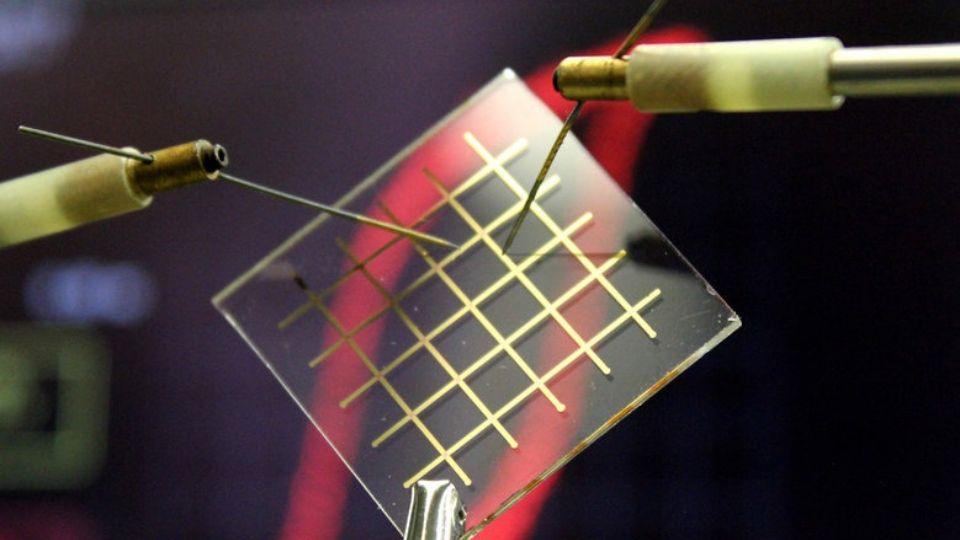Nylon Can Be A New Material To Build Transparent Electronic Devices
Jyotis - Aug 19, 2019

These scientists can realize thin nylon films with a thickness of about 100 nanometers. In fact, even human hair is 100 times thicker than these kinds of films.
- Scientists To Make Concrete Sustainable For Future Facilities In Outer Space
- A Brand-New Continent Has Been Found Underneath Europe
- Isaac Newton Was Apparently An Alchemist, Scientists Discovered
Scientists have recently created a super-thin nylon film which can be a new material to build transparent electronic devices.
The microelectronic industry has focused more on developing electronic textiles and wearable electronic gadgets. Therefore, scientists are researching how to integrate electronic materials into modern clothes.

A group of scientists from MPI-P has partnered with researchers at the Lodz University of Technology and the Johannes Gutenberg University of Mainz to handle the issue that has last 40 years. They dissolved nylon in a combination of acetone and trifluoroacetic acid and make it solid in a vacuum to produce ferroelectric nylon thin-film capacitors.
These scientists can realize thin nylon films with a thickness of about 100 nanometers. In fact, even human hair is 100 times thicker than these kinds of films.
Nylon has been used since the 1920s. In the initial period, it only appeared in stockings for women, but as of now, it is considered as one of the most popular synthetic fibers in the textile industry.
Nylon includes lots of repeated molecular units, for example, polymers. Each of these repeat units has a certain arrangement of oxygen, hydrogen, and nitrogen with carbon atoms.
Not only applied in the textile industry, but many kinds of nylons also show “ferroelectric properties”, in which the negative and positive electric charges can be apart and the state is still unchangeable. Some of the typical applications of the ferroelectric materials include energy collecting devices, memories, actuators, and sensors.

With polymers, the scientists can use adequate solvents to liquify these materials and create flexible super-thin films by processing them from solution more conveniently. This method is a good option for many kinds of electronic devices like transistors, diodes, and capacitors.
According to the major leader of MPI-P Dr. Kamal Asadi,

With the new method, this scientist group managed to create nylon capacitors with high-performance. They hoped to develop the capacitors’ prototypes to more powerful stress cycles, as well as to enhance the ferroelectric nylons’ robustness via a countless number of operation cycles.
The newly-created nylon films may take an important role, similar to many other materials, in producing electronics with high flexibility, as well as in electronics clothes or some bendable electronics devices.
Featured Stories

Features - Jul 01, 2025
What Are The Fastest Passenger Vehicles Ever Created?

Features - Jun 25, 2025
Japan Hydrogen Breakthrough: Scientists Crack the Clean Energy Code with...

ICT News - Jun 25, 2025
AI Intimidation Tactics: CEOs Turn Flawed Technology Into Employee Fear Machine

Review - Jun 25, 2025
Windows 11 Problems: Is Microsoft's "Best" OS Actually Getting Worse?

Features - Jun 22, 2025
Telegram Founder Pavel Durov Plans to Split $14 Billion Fortune Among 106 Children

ICT News - Jun 22, 2025
Neuralink Telepathy Chip Enables Quadriplegic Rob Greiner to Control Games with...

Features - Jun 21, 2025
This Over $100 Bottle Has Nothing But Fresh Air Inside

Features - Jun 18, 2025
Best Mobile VPN Apps for Gaming 2025: Complete Guide

Features - Jun 18, 2025
A Math Formula Tells Us How Long Everything Will Live

Features - Jun 16, 2025
Comments
Sort by Newest | Popular